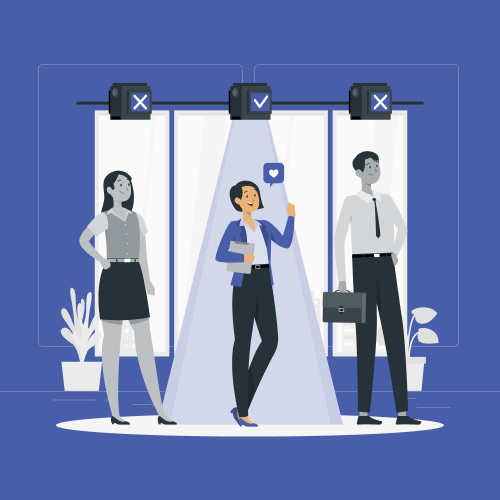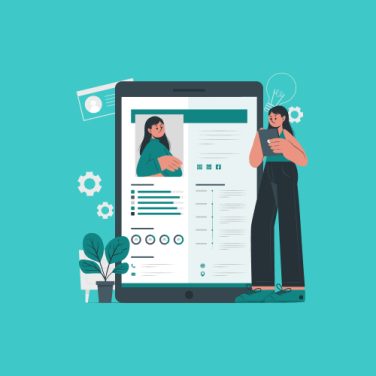Digital onboarding refers to the process of integrating new hires through digital tools and platforms rather than paper-based workflows.
In today’s hybrid and remote work environments, a robust digital onboarding process ensures consistency and a positive first impression, regardless of where a new hire is located.
The sections ahead present a step-by-step blueprint for digital onboarding, highlight proven tactics, address challenges specific to remote teams, and showcase tools and integrations within the MiHCM ecosystem.
Readers will gain actionable insights on optimising every stage of the digital new hire onboarding journey.
Step-by-step digital onboarding process blueprint
Preboarding: Preboarding begins as soon as a candidate accepts an offer. Sending a branded welcome email, digital forms for personal and compliance data, and an interactive resource portal allows new hires to complete critical paperwork before day one. Integrating employee onboarding software ensures e-signatures and data capture occur seamlessly in advance. Automated IT asset requests minimise first-day friction and enable real-time completion tracking.
Orientation: On day one, host a virtual welcome session introducing mission, values, and team roles. Provide a digital handbook with policy acknowledgments and virtual office tours. E-signature workflows confirm immediate compliance, while live Q&A segments clarify expectations and address questions.
Training modules: Leverage an LMS for self-paced courses, quizzes, and live webinars. Deliver role-based content, automated reminders, and progress dashboards. Use MiHCM Data & AI analytics to monitor completion rates, identify knowledge gaps, and schedule follow-up learning.
Mentorship pairing: Automate buddy assignments with SmartAssist-driven workflows that schedule introductory meetings and recurring check-ins. Encourage mentors to share resources, set goals, and gather feedback to foster early engagement and community connections.
Ongoing engagement: Deploy milestone checklists and pulse surveys at week one, 30 days, and 90 days. Offer microlearning modules, knowledge base articles, and discussion forums via mobile app. Automated SmartAssist reminders prompt task completion and manager check-ins, driving retention and productivity improvements.
Top digital onboarding best practices
Implement these digital onboarding best practices to elevate the new hire experience and drive measurable results.
- Personalise each journey with role-based content and templates: Use adaptive templates in MiA and MiHCM Enterprise to tailor welcome packets, training paths, and process checklists based on department, function, and location. This creates relevant experiences that boost engagement from day one.
- Automate workflows: digital forms, reminders, approvals via SmartAssist: Configure SmartAssist to assign tasks automatically, send reminders for pending forms, and route approvals to managers and IT. Eliminating manual handoffs accelerates processes, reduces errors, and ensures consistent compliance across the digital onboarding process.
- Integrate systems: Connect applicant tracking systems, HRIS, and LMS platforms to unify candidate data, training status, and communication channels. This seamless integration creates a cohesive experience and minimises data silos for talent teams.
- Ensure mobile-friendly access for on-the-go engagement: Provide a mobile app for new hires to complete paperwork, review policies, and join virtual sessions. Mobile accessibility supports remote and hybrid work models, enabling new employees to participate in digital new hire onboarding anytime, anywhere.
- Leverage analytics to monitor drop-off points and completion rates: Use MiHCM Data & AI dashboards to track key metrics—form submission rates, time-to-complete, and engagement scores. Identifying bottlenecks allows targeted interventions that improve completion and reduce time-to-productivity.
- Embed social connections: digital welcome events, team directories: Schedule virtual meet-and-greet sessions, create an online team directory with profiles, and offer social forums for new hires. Facilitating interpersonal connections boosts belonging and accelerates cultural assimilation.
- Build compliance checks into the flow: automated I-9, e-signatures, audits: Integrate compliance tasks like I-9 verification, policy acknowledgments, and audit logs directly into the workflow. Automated e-signature capabilities and E-Verify integrations reduce risk and ensure audit readiness.
Optimising digital onboarding for remote teams
Remote teams require adaptation of digital onboarding best practices to ensure new hires feel connected and productive from any location. The following strategies optimise the digital onboarding process for distributed workforces.
- Virtual office tours and culture videos: Create prerecorded and live virtual tours of workspaces, highlight core values, and share employee testimonials. Immersive culture videos give remote hires a tangible sense of the company environment and foster early emotional connection.
- Mix synchronous (live calls) and asynchronous (recorded content) sessions: Balance live orientation meetings with self-paced videos and interactive modules. Combining real-time discussions and on-demand resources accommodates varied schedules and learning preferences across time zones.
- Use mobile app for document signing, check-ins and chat support: Enable remote new hires to complete paperwork, track tasks, and message HR or mentors via an employee self-service mobile app. Mobile accessibility ensures engagement even when away from desktop devices.
- Schedule across time zones with flexible orientation blocks: Offer multiple session slots for key onboarding events to fit different geographic regions. Recording live demos and providing on-demand transcripts maintains parity for all participants.
- Foster community via digital buddy programmes and online social channels: Automate buddy assignments and create dedicated chat groups for introductions, team highlights, and informal Q&A. Virtual coffee breaks and social channels strengthen peer connections.
- Monitor wellbeing with pulse surveys and SmartAssist check-in reminders: Send short surveys after key milestones and automate manager prompts using SmartAssist. Tracking sentiment data helps identify burnout risks and inform proactive support measures.
Essential tools and integrations for digital onboarding
To execute successful digital onboarding best practices, organisations need a suite of integrated tools that automate tasks, centralise data, and enhance engagement. MiHCM offers a unified HRIS with embedded automation and analytics.
MiHCM’s Talent Acquisition & Onboarding module streamlines job postings, candidate workflows, electronic signatures, and preboarding. With employee self-service software, new hires manage forms, benefits elections, and FAQs on their own devices.
SmartAssist automates task reminders and approval routing, while MiHCM Data & AI delivers real-time analytics on onboarding metrics.
Key integrations
- Automating workflows with SmartAssist: Use SmartAssist to assign onboarding tasks, schedule reminders, and route approvals seamlessly. Automated workflows reduce manual follow-ups, ensure compliance, and accelerate the completion of critical steps, driving streamlined onboarding and faster time-to-productivity.
- Leveraging MiA for Employee Self-Service: Chat-based form completion, FAQ bots, and guided checklists allow new hires to submit personal and compliance information without waiting for HR assistance. Mobile accessibility supports remote and hybrid workforce onboarding.
- Seamless recruitment process via integration: Connect applicant tracking data from MiHCM Enterprise directly to onboarding workflows. Candidate profiles, offer letters, and background checks flow into the system, eliminating redundant data entry and enhancing accuracy.
- Using MiHCM Data & AI dashboards: Gain real-time visibility into onboarding KPIs such as completion rates, average task durations, and engagement metrics. Data-driven insights pinpoint bottlenecks and inform continuous improvements to digital onboarding best practices.
Addressing common digital onboarding challenges
Common obstacles can stall your digital onboarding process. Apply these solutions to maintain momentum and ensure compliance throughout the new hire journey.
- Resistance to new tools: Provide concise training videos, quick-start guides, and dedicated support channels. Demonstrations and practice environments build confidence and increase adoption rates among new hires and hiring managers.
- Low engagement: Personalise content with role-specific examples and use interactive elements such as polls, quizzes, and gamified learning paths. Highlight clear objectives and benefits to motivate completion.
- Security concerns: Enforce multi-factor authentication (MFA), role-based access controls, and automated data encryption. Clearly communicate security measures to new hires to build trust and protect sensitive information.
- Data silos: Integrate platforms and centralise data in the MiHCM HRIS. Unified data reduces duplication, ensures accuracy, and supports comprehensive reporting.
- Lack of feedback: Embed pulse surveys and follow-up tasks at key milestones using SmartAssist. Collect real-time insights from new hires and managers to refine the digital onboarding process.
Measuring success: KPIs and Analytics
| KPI | Description |
|---|---|
| Completion rate | % of hires finishing all onboarding steps |
| Time-to-productivity | Days until new hire meets key performance metrics |
| Satisfaction score | Average rating from new hire surveys |
| Compliance rate | % of completed mandatory forms/trainings |
Tracking these KPIs provides HR managers with clear visibility into onboarding efficiency and employee adoption.
Onboarding completion rate highlights overall process effectiveness, while time-to-productivity measures how quickly new hires contribute to core objectives.
Satisfaction scores gauge user experience and cultural fit. Monitoring compliance rates and retention milestones at 30, 60, and 90 days ensures regulatory adherence and informs continuous process improvements.
Leveraging MiHCM Data & AI dashboards allows real-time analysis and proactive adjustments to digital onboarding best practices.
Future trends in digital onboarding
Emerging technologies and evolving workforce expectations will shape the future of digital onboarding. The following trends illustrate where organisations should invest.
- AI-driven personalisation adjusting content to learning styles: Advanced AI engines will tailor training modules, resource recommendations, and communication based on individual progress, preferences, and performance data, ensuring optimal engagement.
- VR/AR virtual office tours and immersive training modules: Virtual reality and augmented reality experiences will enable new hires to explore remote work environments and participate in realistic simulations, improving retention and confidence.
- Chatbot assistants for real-time Q&A and task guidance: Conversational AI will offer on-demand support for common questions, guide new hires through workflows, and escalate complex issues to HR, boosting efficiency and satisfaction.
- Predictive analytics forecasting at-risk hires and intervention timing: Data-driven models will identify new hires who may face obstacles or disengagement, allowing HR leaders to schedule personalised check-ins and tailored support proactively.
- Continuous onboarding: micro-learning and ongoing development: Organisations will adopt continuous learning frameworks with bite-sized content, certifications, and growth pathways that extend beyond the initial onboarding period, fostering long-term engagement.



